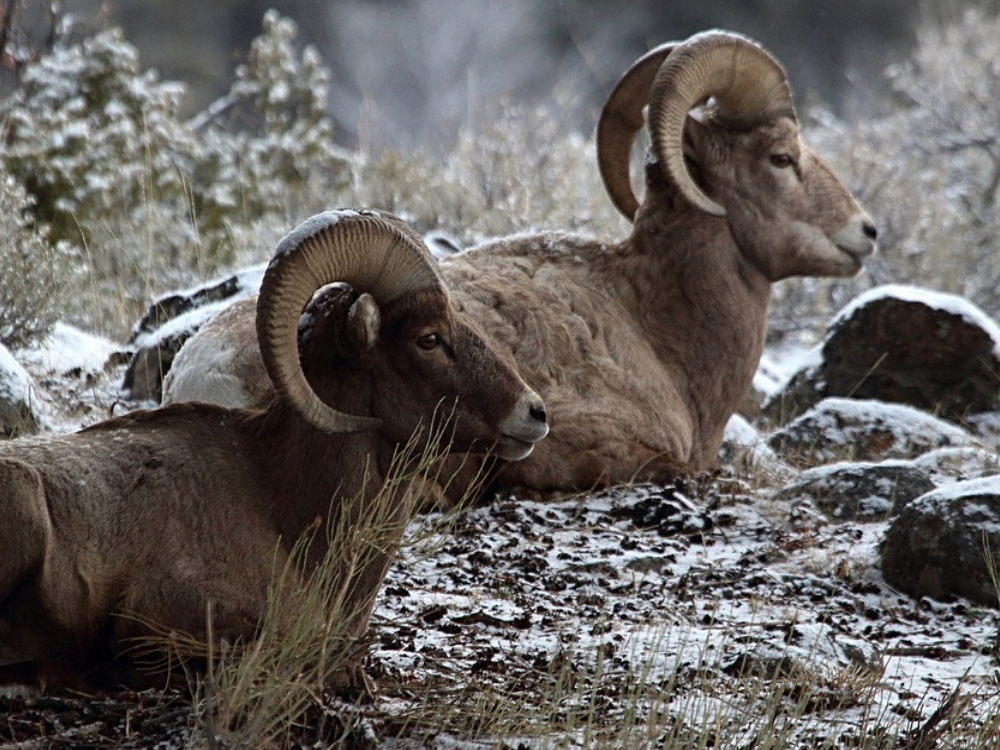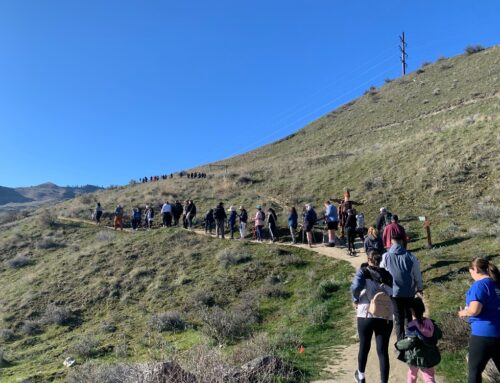WDFW Captures, Collars, and Translocates Chelan Butte Bighorn Sheep
Information from Washington Department of Fish & Wildlife. File photo.
A big trap and lots of bait left almost 30 bighorn sheep on Chelan Butte with either a new home, or a fancy new tracking collar.
On February 21, Washington Department of Fish and Wildlife (WDFW) staff, along with staff from the Utah Division of Wildlife Resources (UDWR), and volunteers with the Wenatchee Sportsman’s Association and Washington Wild Sheep Foundation, captured 28 sheep and sent 20 of them to a new home in Utah.
Bighorn sheep are native to parts of Washington but were extirpated in the early 1900s. In 2004, 35 sheep were translocated from the Cleman Mountain herd, in Yakima County, and released in the Chelan Butte Unit of the Chelan Wildlife Area to establish the Chelan Butte herd. Today it numbers approximately 200.
The February capture effort was aimed at checking the health of herd members, collaring some to learn more about their habits and behavior, and moving some to a new area in Utah. The bighorns were caught using a trap that looks like a big corral. Bait is placed in the middle, and once sheep are inside eating, a trigger is pulled to drop an encircling tarp wall around the animals.
“The trap worked as well as could be expected and in our initial capture we were able to corral approximately 40 animals,” said WDFW Assistant District Biologist Devon Comstock.
Because many animals were not needed for this particular operation, twelve of the sheep were released immediately. The other 28 received physical exams and were tested for a variety of pathogens, in an effort to keep bighorns free of the Mycoplasma ovipneumoniae bacteria that can lead to deadly pneumonia.
Eight of the sheep were fitted with GPS collars, which will provide biologists information on habitat use and seasonal movements of the animals, then released on site. The other twenty were relocated to the Stansbury Mountains in Utah; a rugged range approximately 45 minutes west of Salt Lake City.
The Stansbury Mountains are home to a small herd of approximately 60 healthy bighorn sheep that were introduced in 2018. By translocating sheep to join this herd, Utah will be able to attain bighorn sheep population goals more quickly, increase genetic diversity, and expand the range of the herd.
This translocation benefited both Utah and Washington, as WDFW wants to maintain the Chelan Butte herd at approximately its current size. This helps to limit the spread of respiratory pathogens that cause disease and reduces pressure resources for food and habitat.
“The Utah Division of Wildlife Resources is very grateful to WDFW for offering these animals, this project will benefit healthy wildlife in Utah as well as the people who enjoy them on the landscape,” said Jace Taylor, UDWR Bighorn Sheep and Mountain Goat Biologist.
No animals were harmed during the capture. WDFW and UDWR veterinary teams and biologists take extreme care to reduce stress and handling time for each animal during the process.
“The highest priority of any capture is the safety of the wildlife we are handling, and the staff and volunteers participating,” Comstock said.
More information on bighorn sheep and pneumonia can be found on the WDFW website.








